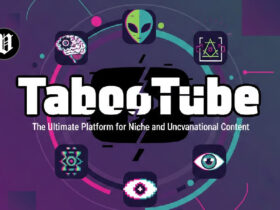Have you ever noticed how some trends seem to emerge overnight, reshaping industries, consumer expectations, and even the way we do business? Welcome to the world of Wachappe—a term that’s gaining serious momentum in strategic marketing, consumer psychology, and innovation circles.
The Wachappe Effect isn’t just a passing fad or digital buzzword. It’s a deeply influential phenomenon rooted in interconnectivity, adaptability, and consumer-led experiences. In today’s business environment—where trends travel faster than ever—the Wachappe Effect represents the ripple effect of how ideas, preferences, and innovations rapidly shift across sectors.
As we explore the Wachappe Effect in this comprehensive guide, you’ll gain insights into:
- Its historical origins
- Defining characteristics
- Examples from leading industries
- How it affects consumer behavior
- The potential it holds for future innovation
Let’s dive into how Wachappe is reshaping modern markets and strategies, one interaction at a time.
What Is the Wachappe Effect?
The Wachappe Effect refers to the dynamic shift in business and consumer ecosystems brought on by rapidly spreading ideas, community-driven marketing, and behavioral contagion across networks. Rooted in social psychology and digital sociology, the term “Wachappe” encapsulates how consumers influence each other’s preferences, decisions, and loyalties in real time.
Unlike traditional marketing models where brands dictated narratives, the Wachappe Effect is bottom-up, with users driving trends, shaping brand reputations, and encouraging organic growth through peer influence, emotional engagement, and shared values.
Historical Origins of the Wachappe Phenomenon
The concept of Wachappe has its roots in late 20th-century studies on social influence and community behavior. Academic researchers and early marketing theorists began to notice how buying behaviors were increasingly shaped by peer groups rather than personal need alone.
The real turning point came with the rise of digital platforms. As communities moved online and connectivity became instantaneous, information—and influence—spread faster than ever. Early social platforms (like forums and blogs) laid the groundwork, but the true catalyst for Wachappe was the mobile and social media revolution.
By the 2010s, platforms like Facebook, Instagram, and TikTok had given birth to:
- Viral trends
- Influencer-led commerce
- Real-time feedback loops
- Brand co-creation with consumers
Brands began shifting from transactional to relational models, using data, personalization, and storytelling to keep pace with these rapid shifts.
Key Characteristics of the Wachappe Effect
1. Hyper-Connectivity
The Wachappe Effect thrives in environments where consumers are interconnected across multiple platforms. Word-of-mouth has evolved into world-of-mouse, where recommendations and opinions reach global audiences in seconds.
2. Adaptability
Markets impacted by Wachappe are flexible and fast-moving. Brands that succeed in this space are those that listen, adapt, and innovate in real time.
3. Peer-Led Influence
Social proof, rather than brand messaging, drives trust. Consumers follow recommendations from friends, influencers, or niche communities before turning to official marketing.
4. Transparency and Authenticity
Trust is a currency in the Wachappe ecosystem. Consumers expect brands to be open, socially responsible, and aligned with real-world values.
5. Emotional Engagement
Emotions are the driving force behind most viral or sticky content. Brands that connect on a deeper, more human level thrive under the Wachappe Effect.
Real-World Case Studies of Wachappe in Action
Apple Inc. – Cultivating Loyalty Through Storytelling
Apple’s success is a textbook example of the Wachappe Effect. Beyond selling technology, Apple has created a brand culture—a sense of belonging that its users identify with. Its marketing campaigns focus on:
- User stories
- Seamless design
- Emotional resonance
Apple users don’t just consume—they advocate, sharing unboxing videos, reviews, and recommendations. That’s the Wachappe Effect at scale.
Nike – Leveraging Limited Drops and Collaborations
Nike combines hype culture and collaboration marketing to tap into the Wachappe Effect. Limited releases like the Travis Scott or Off-White collections build urgency, drive UGC (user-generated content), and spark global conversations.
Nike isn’t just selling shoes—it’s cultivating community-led momentum.
Local Restaurants and Ethical Brands – Transparency Sells
In the food and wellness industries, consumers increasingly value ethical sourcing, sustainability, and transparency. Restaurants and brands that share behind-the-scenes processes, ingredient sourcing, and sustainable initiatives often see greater customer loyalty.
For example, local eateries that showcase their partnerships with local farmers or sustainable fishing practices engage ethically-minded customers and tap into their networks.
Impact on Modern Markets and Consumer Behavior
The Wachappe Effect has profoundly influenced how companies operate and how consumers make decisions.
1. Shift from Transactional to Experiential
Businesses are no longer selling products—they’re selling experiences. Consumers want to feel something, belong somewhere, and believe in something when they make a purchase.
2. Accelerated Innovation Cycles
To stay relevant, companies now launch faster, test faster, and iterate continuously based on feedback from digital communities.
3. Real-Time Marketing
Gone are the days of quarterly campaigns. Brands must now respond instantly to trends, memes, social movements, and cultural shifts.
4. Rise of Micro-Influencers and User Communities
Instead of big-budget ads, brands are turning to everyday creators and niche groups who influence behavior more organically.
5. More Personalized Experiences
With access to consumer data, companies can craft hyper-personalized experiences, increasing retention and satisfaction.
Challenges and Criticisms of the Wachappe Effect
While the Wachappe Effect offers significant benefits, it also presents notable challenges and risks:
1. Market Saturation
When too many brands use similar engagement strategies, the market can become oversaturated, making differentiation difficult.
2. Consumer Fatigue
The constant bombardment of trends, drops, and content can lead to consumer burnout, decreasing overall engagement rates.
3. Privacy Concerns
With increased personalization comes the risk of overstepping boundaries. Consumers are growing more concerned about data collection practices.
4. Sustainability and Waste
Hyper-speed innovation and fast trends can fuel unsustainable production cycles, particularly in fashion, tech, and retail.
5. Not Universally Applicable
Certain industries—like healthcare, law, or B2B infrastructure—may find it challenging to fully integrate the Wachappe model without compromising regulatory or operational standards.
Future Potential of the Wachappe Effect
The Wachappe Effect is still evolving, and its future potential spans a range of industries:
1. AI and Predictive Personalization
As AI advances, expect brands to anticipate consumer desires before they’re expressed. AI-driven personalization can offer tailored products, experiences, and services at scale.
2. Education and E-Learning
Imagine educational platforms adapting course content in real-time based on student behavior and performance—a clear Wachappe-style application.
3. Healthcare and Wellness
Personalized treatment plans based on lifestyle data and wearable insights can revolutionize patient care, leading to more proactive and preventive systems.
4. Sustainable Commerce
Consumer values around climate, social justice, and sustainability are growing. Brands that align with these values and co-create with conscious consumers will thrive.
5. Decentralized Communities and Web3
As decentralized technologies gain traction, community-owned brands could become the next frontier for Wachappe—where users shape the direction of the product itself.
Conclusion
The Wachappe Effect is more than a trend—it’s a lens through which we can understand the new rules of engagement in business. Rooted in connectivity, authenticity, and co-creation, Wachappe has become a force reshaping everything from how brands market to how consumers choose.
By understanding its origins, embracing its characteristics, and planning for its challenges, businesses can use the Wachappe Effect as a catalyst for sustainable innovation and growth.
As we move forward, the most successful organizations will be those that can listen, learn, adapt, and co-create alongside their audiences. The age of top-down marketing is fading. Wachappe has ushered in a new era of shared ownership and collective evolution.
FAQs
What does “Wachappe” mean?
Wachappe refers to the ripple-like effect in markets and behavior caused by interconnected consumer trends, digital engagement, and rapid innovation.
Is the Wachappe Effect applicable to all industries?
While most impactful in tech, retail, and lifestyle sectors, elements of Wachappe can be applied in healthcare, education, and even government with the right strategy.
How can small businesses use the Wachappe Effect?
By fostering community, using social proof, and engaging authentically, small businesses can leverage Wachappe to grow organically.
Are there risks to following the Wachappe Effect?
Yes—market saturation, consumer fatigue, and data privacy concerns are real risks. A thoughtful, balanced approach is essential.
What’s next for the Wachappe Effect?
Expect AI integration, decentralized community ownership, and sustainability to play major roles in the next phase of the Wachappe evolution.
For more Visit VintagePosts













Leave a Reply